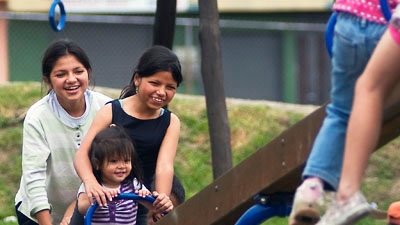For a safe city
In recent decades, the rapid urbanization of Ecuador has meant that two of every three citizens now live in urban areas. According to the ECLAC, between 2000 and 2010, Ecuadorian cities had a growth rate of 2.4% annually, compared with the Latin American average of 1.7%. This reality has pressured national and municipal planners, as well as representatives of public and private organizations, to step up efforts to ensure safe, inclusive cities in the country.
A safe city is not built overnight, for which reason all citizens must make a long-term commitment to this end. Making a city safe encompasses several aspects, including the design of urban spaces that encourage inclusive social integration, such as parks, sports facilities and community areas. Moreover, during the urban planning processes, strategies should be designed for crime prevention and the development of comprehensive neighborhood security projects.
Since 2009, the District Municipality of Quito has been implementing the Urban Risk Reduction Program, with support from the World Bank and the United Nations Development Program (UNDP). This program has World Bank financing from the Global Facility for Disaster Reduction and Recovery (GFDRR). Its main objective is to promote a culture of prevention that incorporates the concept of security from a perspective of comprehensive urban risk reduction and prevention, including natural and technological hazards, violence and road security issues.
Ricardo Peñaherrera, coordinator of the Urban Risk Reduction Program, said that the project has encouraged municipalities to view risk management as a management of processes to prevent future risks through corrective action management – reducing existing vulnerabilities—as well as through reactive management, to prepare for and implement an effective, efficient response.
Program results go even further, however: in the community area, two pilot projects were launched to promote community participation in the design of safe recreation spaces. According to César Lescano, president of the Santa María Neighborhood Association in Cotocollao, Quito, the project has promoted teamwork and the renewal of public spaces. This has directly benefited citizens, who can now use the parks, playgrounds and sports facilities day and night to engage in healthy leisure and integration activities.


